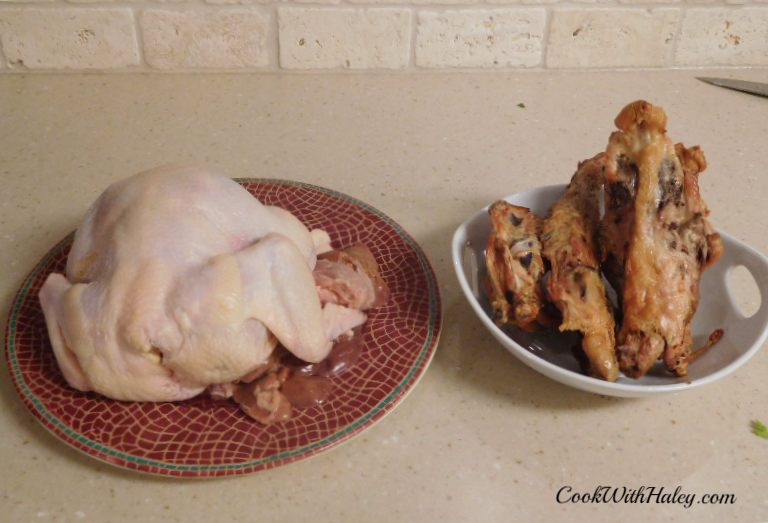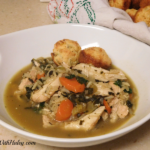Chicken stock is a fundamental building block for so many delicious recipes and if you use it in as many recipes as I do it makes sense to put in a little extra work sometimes to make it at home.
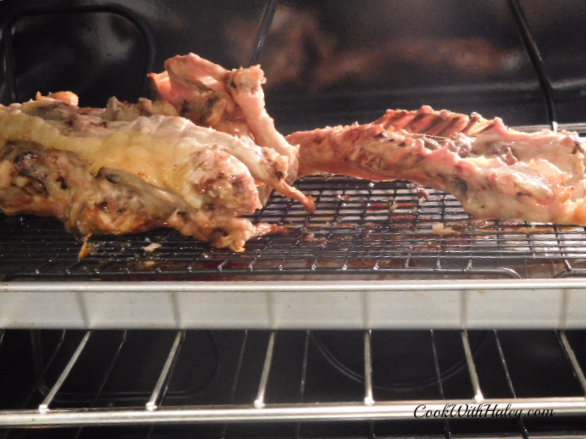
Stock Vs. Broth
The question that will live on into perpetuity seems to be, “what is the difference between stock and broth?” If this were a French culinary school you may find a plate flying at your face after asking that question. Don’t worry, this is a no throwing zone, and if you’re a chefy who throws things, please stop. My 4-year-old will tell you it’s not kind to throw. There is no shame in asking this or any question. Here is the no shame answer.
In the professional culinary industry stock is made with only the bones of the animal, whether that be chicken, veal, or fish. These bones are often roasted prior to going into the stock pot for a deeper flavor. In the culinary world broth is made from the meat of the animal with no bones. Technically, from a professional cook’s perspective vegetable stock is not actually stock because there are no bones (at least not in my vegetable). Wouldn’t you know, cooks still use the word “stock” to refer to the cooking liquid from slow simmered vegetables. The same goes for “bean stock” when cooks refer to the cooking liquid used to cook beans (Don’t tell anybody, but cooks can be a little loosey goosey with their terminology when chefs aren’t around).
Store bought stocks and broths seem to interchange the two terms. Some are made with bones only, but are called broth. Others are made with meat but are called stock. If you’re buying store bought it’s best to get into the habit of inspecting ingredient lists.
For most of my recipes I prefer to balance the flavors with both roasted bones as well as meat.
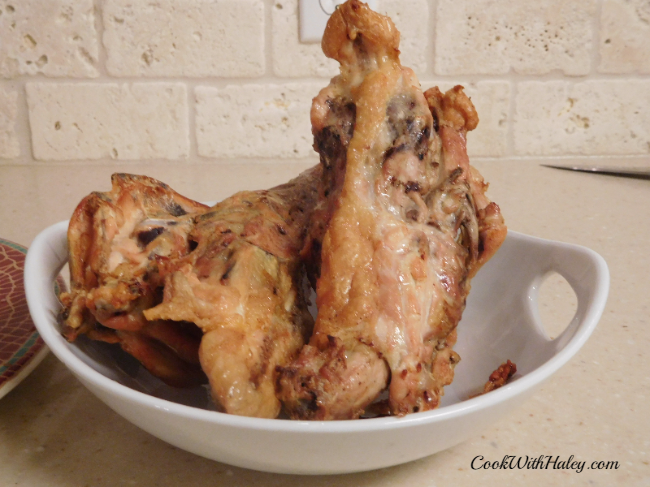
What You’ll Need
http://theygotodie.com/about-the-film-2/synopsis A Big Pot
This recipe makes about 1 gallon of stock, so that means you will need a very large stock pot. The pot I use is a 30 quart stainless steel stock pot, but you can probably get away with a 16 to 20 quart pot. You want to make sure there is room for about 3 gallons of water, a whole chicken as well as all of the aromatics and the roasted chicken bones.
http://vbrisket.com/groups/le-temps-des-aveux-download/ A Big Container
Because this recipe makes quite a lot of stock, you will need to consider what container (or containers) you’ll keep it in at least until it solidifies in the refrigerator. At that point you can scrape the excess fat from the top, divide it into zip-lock bags and freeze in portions. I use a gallon sized, circular plastic container known as a Cambro in the restaurant industry.
Lots of Time
Making your own stock is seriously simple. The main challenge is to make sure you clear off your calendar for 5-6 hours or break up the work into multiple days. You can debone chickens and roast the bones on day one, chop up vegetables and collect all of your ingredients on day two, and all that is left is sauteing and simmering on day three.
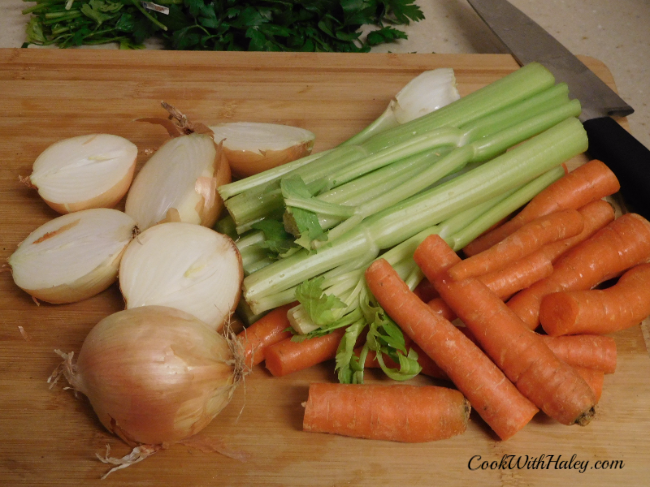
The Payoff
To me the main benefit to making your own chicken stock is economics. I use chicken stock in so many recipes that I find I either need to buy a case of the boxed stuff or go back to the store over and over for more.
I debone two whole chickens and freeze the breast and tenders in one zip-lock, the legs and thighs in another zip-lock, and the wings and drummets in a third zip-lock. Most of the time I cook for three people so I don’t really need value packs of chicken pieces. Two chickens broken up this way will become at least three meals for my family.
Finally, if you follow a gluten free diet you know that some store bought stocks may contain gluten. Even if these store bought stocks don’t contain gluten or gluten based products in the ingredients list they may not explicitly state they are made in a gluten free facility. If gluten causes a severe reaction for you, you may not even want to risk it. That does not mean you can’t enjoy delicious chicken stock! By making it in your own kitchen you control the ingredients and the environment.
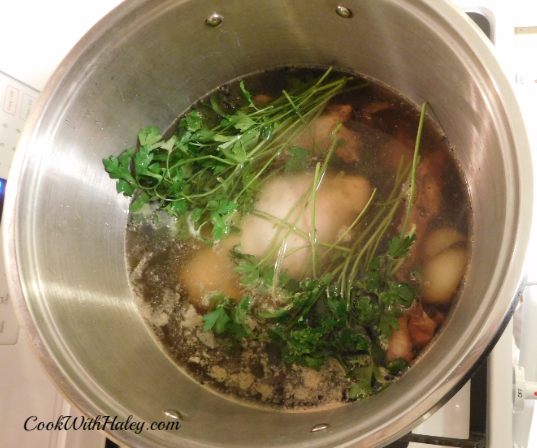
Homemade Chicken Stock
- Bones of 2 whole chickens
- 1 TBS Safflower oil
- 3 Onions, halved, peels left on
- 6 Carrots, halved
- 5 Celery ribs, halved
- 1 Garlic head, halved crosswise
- 2 TBS Kosher salt
- 2 TSP Whole black peppercorns
- 1 Chicken, whole
- 30+ Parsley sprigs, about half of a bunch from the grocery store
- 1 TSP Whole cloves
- 3 Bay leaves
- 3 Gallons water
- Preheat your oven to 400 degrees. Roast bones for about 90 minutes, until golden brown. Set bones aside to cool
- Heat large stock pot over high heat. Add safflower oil and add onions, carrots, celery, garlic, salt, peppercorns. Saute until vegetables are browned, about 13-15 minutes, stirring occasionally.
- Add whole chicken, parsley, cloves, bay leaves, and 3 gallons water. Bring to the boil over high heat. Reduce heat to simmer. Simmer uncovered for about 4 hours, until reduced by 2/3.
- Strain the stock through a colander lined with cheesecloth. Discard chicken, bones and vegetables. Refrigerate stock in a 1 gallon Cambro or large Tupperware. Scrape off any fat that collects on top of the stock and divide into zip-lock bags and freeze.
